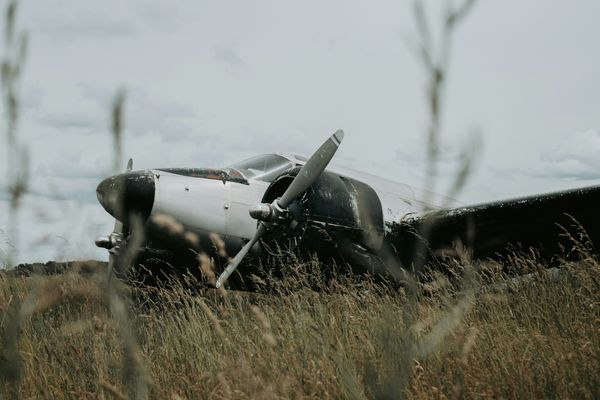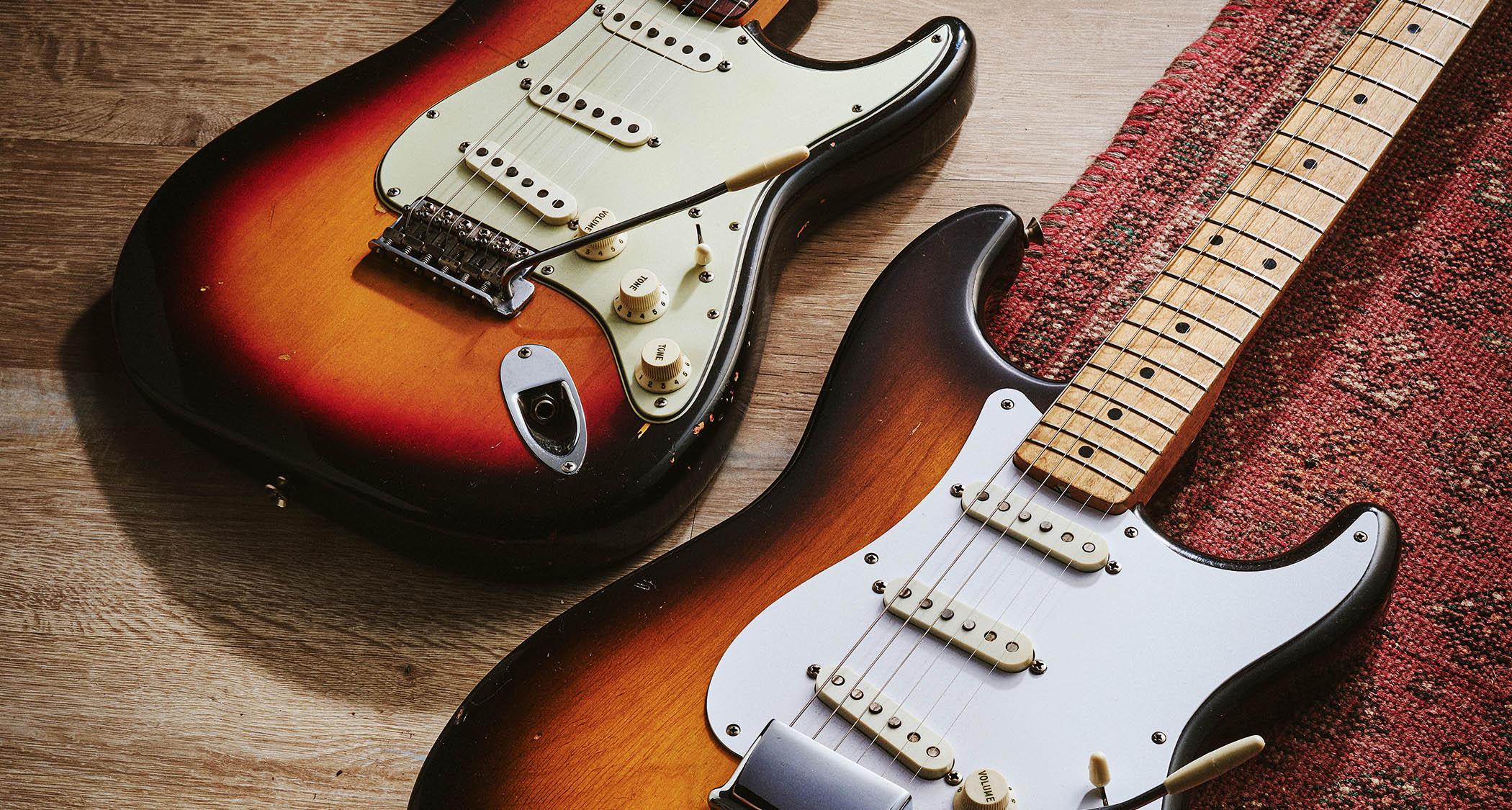
If Leo Fender really did get everything right the first time, then why did flagship models such as the Stratocaster continually evolve? By the close of the pre-CBS era, the late-1964 Stratocaster differed significantly from the Strat ‘prototypes’ that began appearing in the first half of 1954.
Steve Hove of ATB Guitars in Cheltenham has brought along five pre-CBS Stratocasters to guide us through the changes that occurred between 1957 and 1964 and tell us about recent market trends.
1957
“Ash is an open-pore wood that needed to be grain-filled. After the very earliest Strats, which just had a natural finish with the dark perimeter, Fender sprayed the centre section yellow. In 1955, they began applying a sealer called Homoclad over the grain filler before spraying the yellow.
“Alder bodies became standard towards the end of 1956 and they didn’t require grain-filling. Fender started dipping bodies in yellow stain before applying the sealer and then spraying the edges and topcoats. This 1957 is a good early example of an ash body sunburst where we can see all the finishing stages that are correct for the year.”

“Some people may regard Strat necks from 1954 as being a bit big and unrefined, and this continued into 1955. By 1956, Fender had phased in a soft V profile and during 1957 the V became more pronounced.
“This 1957 has the ‘harder’ V, but in the scheme of things it’s still relatively soft and nothing like the almost triangular cross section that some Gibsons had in the pre-war era. The soft V is a desirable profile these days and it’s the one a lot of Fender’s reissues are based on.”
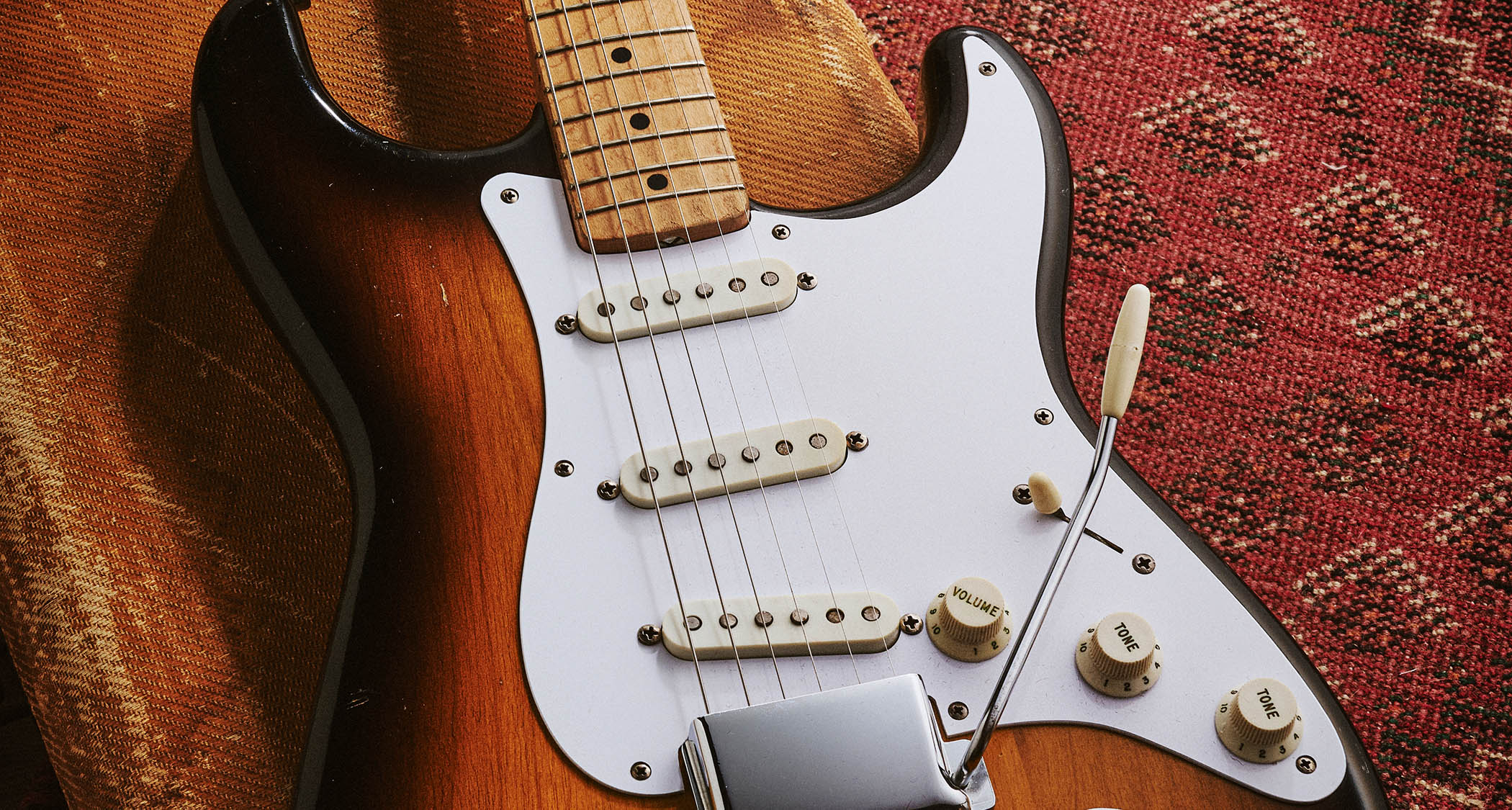
“The pickups in this guitar are all original and feature the black fibreboard bobbin material that lasted until 1964. During the pre-CBS era the pickups were scatter-wound with the wire guided onto the bobbin by hand, so they do tend to vary. The heavy Formvar insulated magnet wire was also inconsistent, so the pickup resistance tends to range from the high 5ks to low 6ks.
“Two-tone sunburst Strats are also synonymous with single-ply ABS plastic pickguards that retained their white colour pretty well. The look is quite austere and basic, but they stood up to warping and shrinking better than the later nitrate ’guards.
“This guitar is somewhat rare and unusual because the body is dated 9/57, but it’s ash – rather than alder. Fender never stopped making ash Strat bodies, but they were generally reserved for translucent blonde-finished guitars like the Mary Kaye model.”
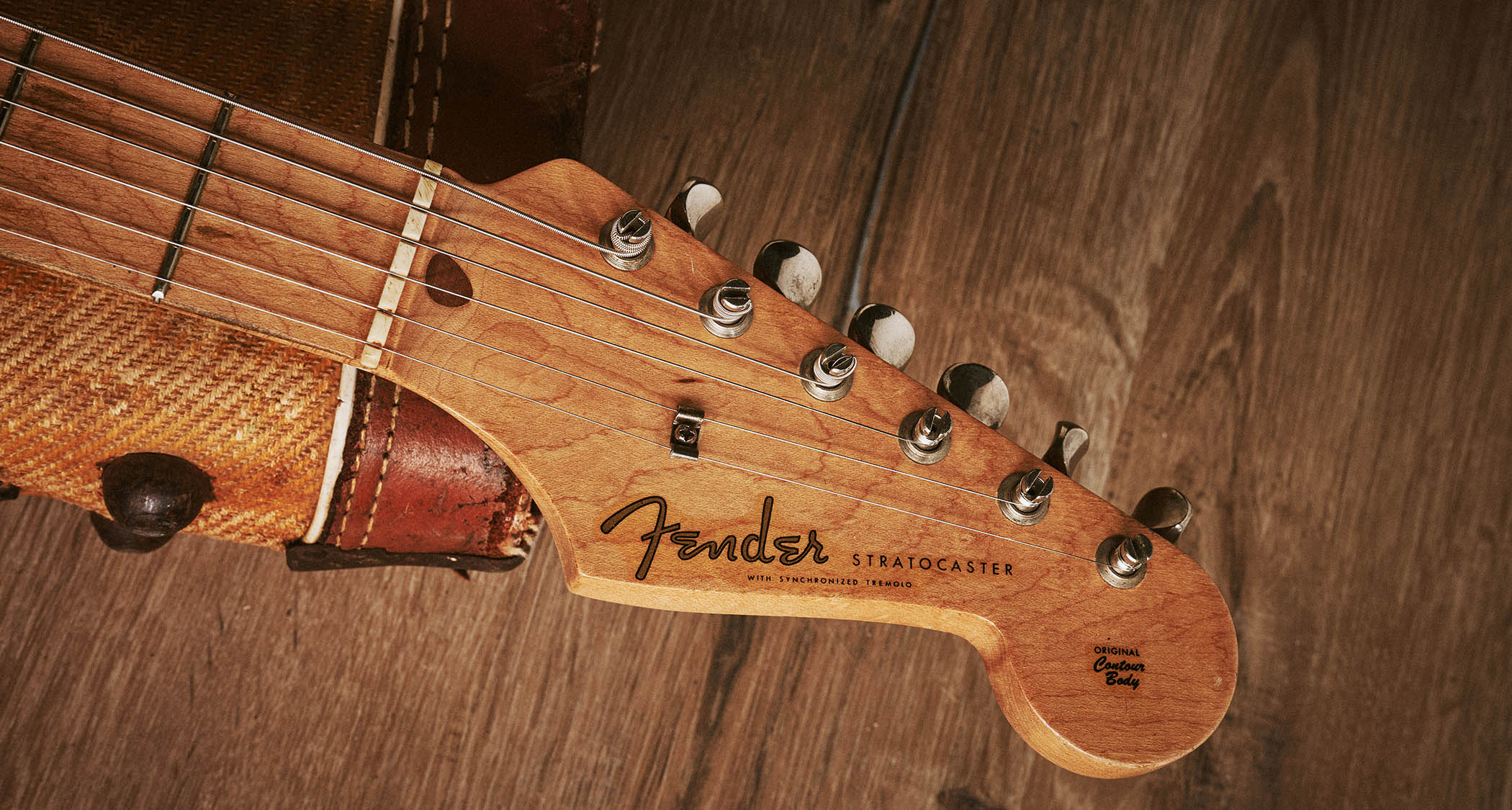
1960
“1958 saw the introduction of red into Fender’s new ‘two-tone’ sunburst, and it first appeared on the Jazzmaster. They were still staining the bodies before spraying the dark edges and the red. Like the red in Gibson’s sunbursts, Fender’s red was prone to fading and it’s often more vibrant under the pickguard and jack plate. This guitar has faded into something resembling a two-tone.
“The slim D neck profile was introduced in 1958. Earlier examples were still one-piece maple necks, but later that year Stratocaster followed Jazzmasters in getting rosewood fretboards. This profile was retained until around 1961, and from 1959 onwards they can be quite skinny. These earlier rosewood necks have thick ‘slab ’boards’, where the fretboards were flat on the underside and radiused on top.”
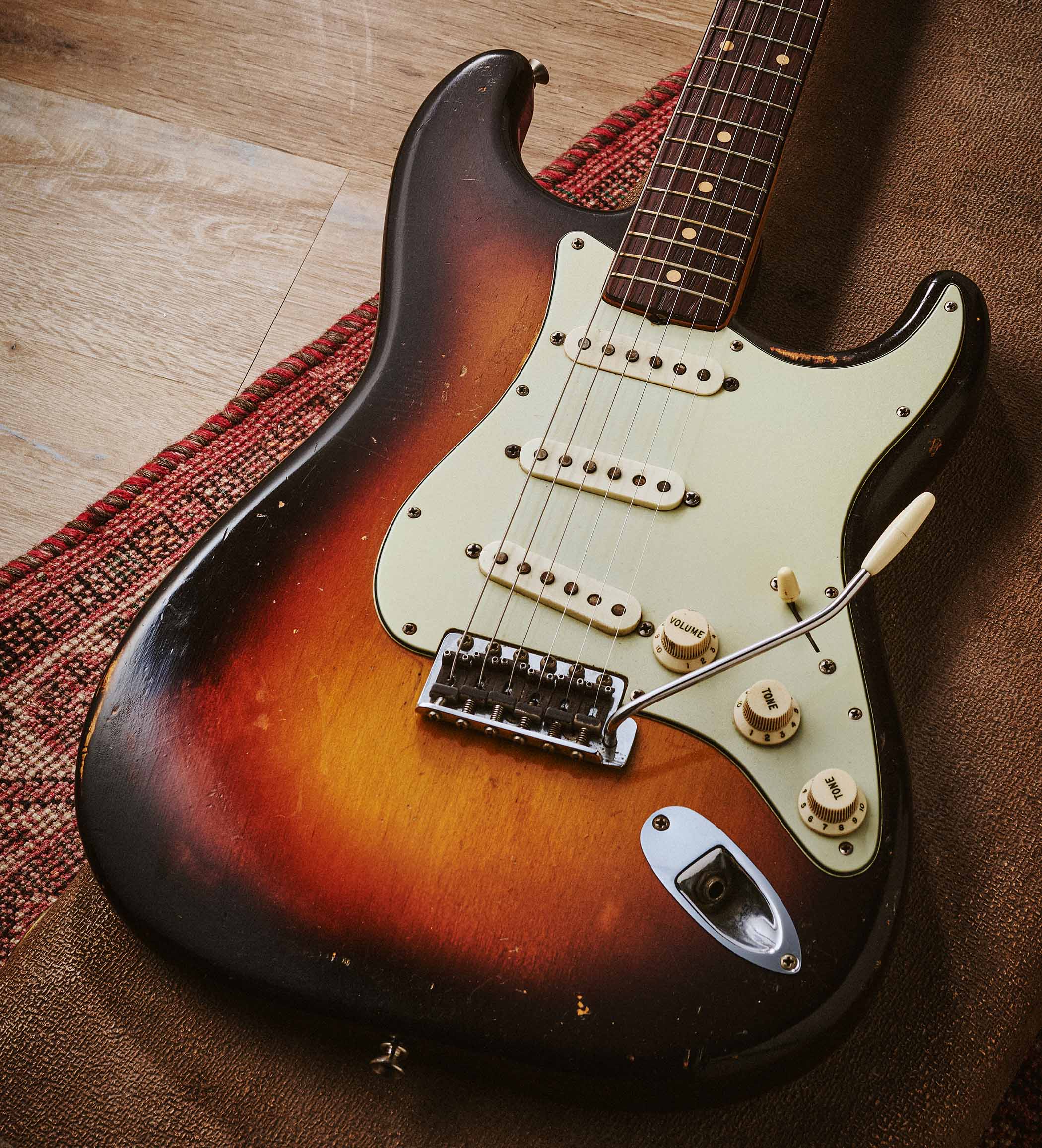
“One way to identify original necks is to look for the rosewood cutting across the top of the truss rod access hole. If you see maple in a gap between the top of the hole and a slab ’board, it’s not a pre-CBS neck.
Fender introduced the veneer ’board around July 1962 and that seemed to coincide with the necks becoming a bit fatter
“There should also be router template locating pin holes under the D tuner and on the heel. This neck has no pencil date, which is typical for the mid-1959 to early 1960 era.
“Rosewood is a hard-wearing wood, and traditionally rosewood fretboards weren’t lacquered. Maple is hard, too, but the lacquer Fender applied over it tended to wear off, and finger marks weren’t perceived as a good look in those days. Negative customer feedback and numerous warranty repairs may also have prompted the changeover.
“Early three-tone sunbursts with maple and rosewood necks still had single-ply ’guards, but by 1959 celluloid nitrate three-ply guards became standard. These ’guards are prone to shrinking, and cracks are often seen by the neck pickup height adjustment screw, switch and treble side horn. They’re known as ‘green’ ’guards, but the shade can differ considerably depending on environmental factors.”
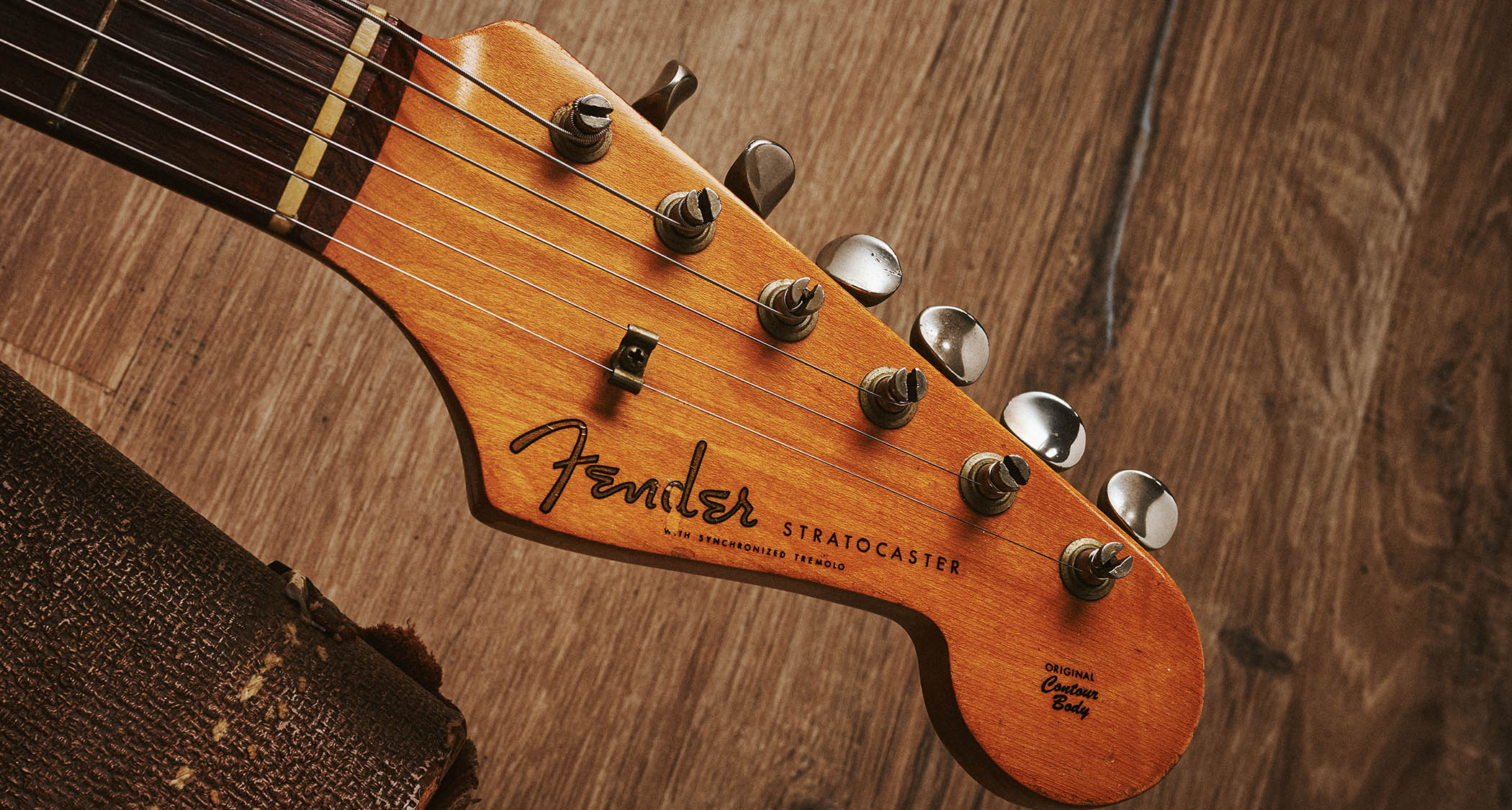
1962
“It could be that this 1962 example had less exposure to UV light or, like Gibson, Fender began using a red pigment that was less prone to fading. Either way, the vibrant red on this guitar provides some indication of how the 1960 may have looked when it was new.
“The yellow also looks far more vivid, and it’s interesting to note how the width of the very dark brown band around the edges always varied. It could be that wider bands were applied to mask flaws in the alder, or maybe the look differed depending on which employee was spraying the finish.”

“Fender introduced the veneer ’board around July 1962 and that seemed to coincide with the necks becoming a bit fatter. But the changes between 1958 and 1965 were far less noticeable than those between 1954 and 1957. In my experience, the early veneer ’boards tend to be a bit thicker, but fretboards that have been over-sanded when being refretted can confuse the issue.
“Slab- and veneer-’board necks were made in a slightly different way. For veneer-’board necks, like this one from October ’62, the maple was radiused and the veneer was clamped to conform to the curve as it was glued on. Again, this streamlined the production process, and since rosewood was probably Fender’s most expensive wood, using less of it may have reduced costs.”

1963
“A big change in Fender’s finishing method occurred in 1963 when they began using dipping bodies into Fullerplast. Again, this was probably motivated by the desire to simplify and streamline the process, and in turn reduce costs.
“Fullerplast was a quick-drying clear polyurethane base coat that was applied after the stain. It was easy to sand and provided an even surface for nitrocellulose colour coats. It also prevented expensive nitrocellulose lacquer from soaking into the wood, which meant that fewer coats were needed.”
“Some people assume it was a Fender product because Fullerplast relates to Fullerton, California, where the Fender factory was located.
Fender’s switch to rosewood ’boards meant they could rout the truss rod channel into the top, rather than the underside of the necks, because the fretboard covered everything up
“In fact, the product combined the name of its inventor, Fuller O’ Brien, with the dreaded word ‘plastic’. People often assume that all vintage Strats had ‘breathable’ nitro finishes, but from 1963 onwards the nitro was sprayed over poly.
“Fender’s switch to rosewood ’boards meant they could rout the truss rod channel into the top, rather than the underside of the necks, because the fretboard covered everything up. This allowed them to dispense with the walnut skunk stripe and headstock plug that feature on the 1957.”
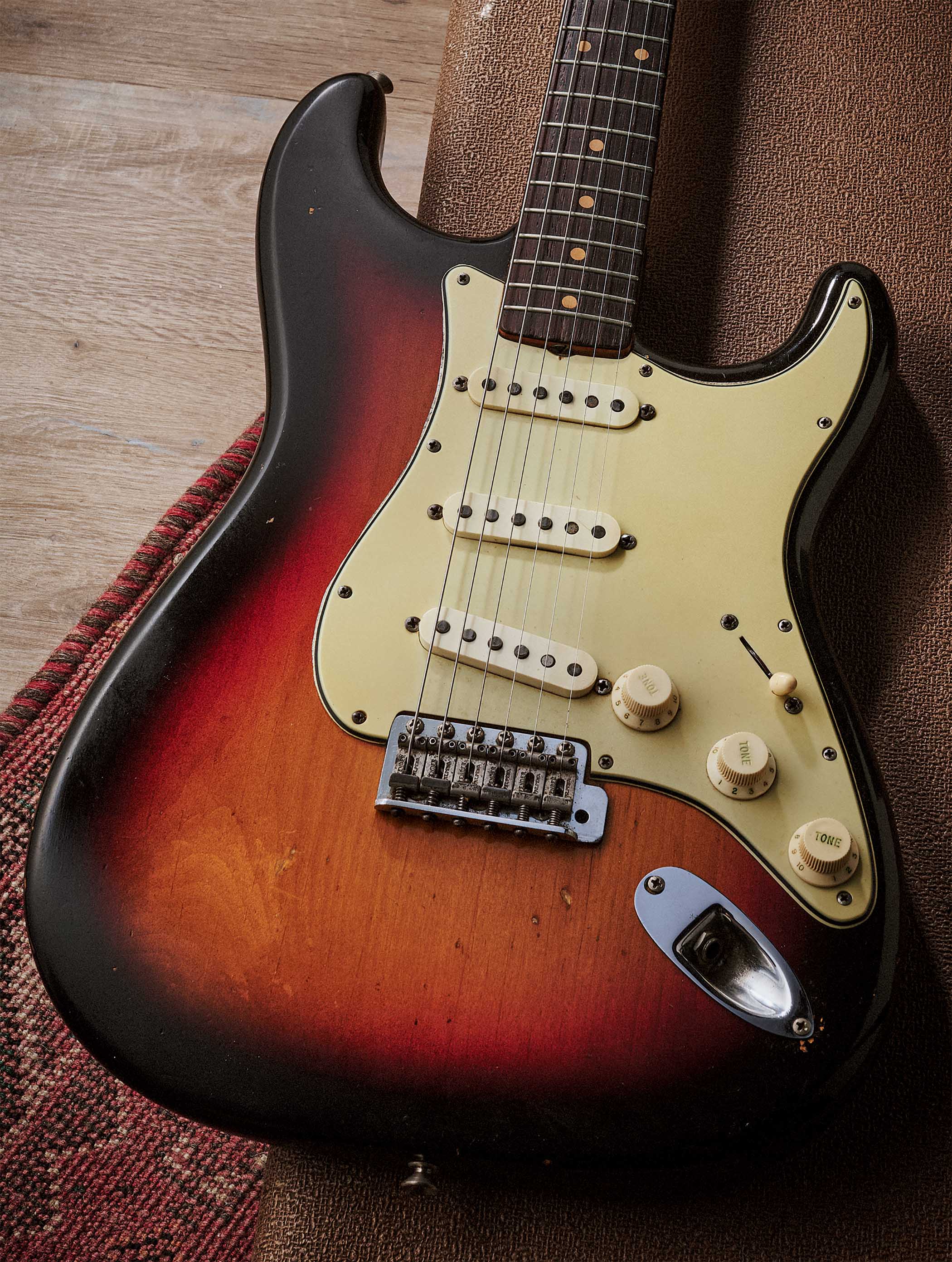
“The pickguard screw later underwent a subtle change 1963. This guitar has an earlier-style ’guard with a screw hole equidistant between the neck and middle pickups, but later that year Fender moved the screw hole closer to the middle pickup as you can see on the 1964 example.”
1964
“In late 1964 Fender stopped staining the bodies and went back to spraying the yellow section. By that time, they were sometimes using lesser-grade alder that wasn’t as visually appealing, so they added white to the yellow to make it less see-through. This would conceal smaller knots, mineral streaks and joins in bodies that would previously have been set aside for solid custom colours.
“This unfaded 1964 example has the more opaque yellow and, rather than blending into one another, each colour band is distinct and separate. It’s the style known as the ‘target ’burst’ that ushered in the CBS era.”

“Fender’s other big change was made to the pickups in late 1964 when fully automated machine-winding replaced hand-winding. The pickup readings became far more consistent and the windings were no longer ‘scattered’. These pickups can be identified by their grey bottoms, although black-bottomed pickups can sometimes be seen in 1965 and 1966 Strats.
“They also changed to plain enamel insulated magnet wire, which has a brownish purple look, rather than the reddish copper colour of Formvar wire.
“In 1964, Fender started applying yellow date stamps to black-bottom pickups, which is the case with this guitar, and they continued doing this with the grey-bottom pickups. To my ears, the grey bottoms sound a little bolder and more punchy than the Formvar ones, with extra fatness and less midrange scoop.”
Market Movements
“There’s a lot of choice out there, and people lean towards various schools of thought. Some prefer the earlier slab ’boards with the slimmer necks from around 1960 and 1961, others prefer two-tone sunbursts with fatter maple necks. When you take into account the whole of the pre-CBS era, there really is something for everyone.
“Within that you have to factor in the overall condition and originality, which dictates the price you have to pay. There are so many variables in the vintage market and it does help if you can visit a shop like ATB that has a really good selection of vintage Strats for you to try.”
Two guitars from the same year can actually look and sound very different, depending on how they’ve aged and how much they’ve been played. Some of our buyers prefer guitars that are worn and look like they’ve had a life. Others are prepared to pay a premium for guitars that are collector grade and in near mint condition.
Not that long ago you could get a refinished pre-CBS Strat at a relatively affordable price, but prices have recently been going up a lot
“With rosewood necks, slab ’boards seem to have greater desirability and they tend to be priced higher. Maybe people gravitate towards them because it’s a bigger piece of a premium tonewood that’s indicative of a certain period of pre-CBS manufacturing and it resonates with a lot of people. Some believe the slab ’boards have a different tone to veneer ’boards, but others think it’s more of a visual thing.
“Refinishes are an interesting part of the market, too. Not that long ago you could get a refinished pre-CBS Strat at a relatively affordable price, but prices have recently been going up a lot.
“A lot depends on the quality of the refinish and how the ageing sits with the guitar – nice ones will now run to five figures. They have maybe doubled in value and then some over the last decade. With original Strats hovering around £25,000 it just drags up the values of player-grade guitars.”
- Guitarist would like to thank ATB Guitars of Cheltenham .
- This article first appeared in Guitarist. Subscribe and save.
